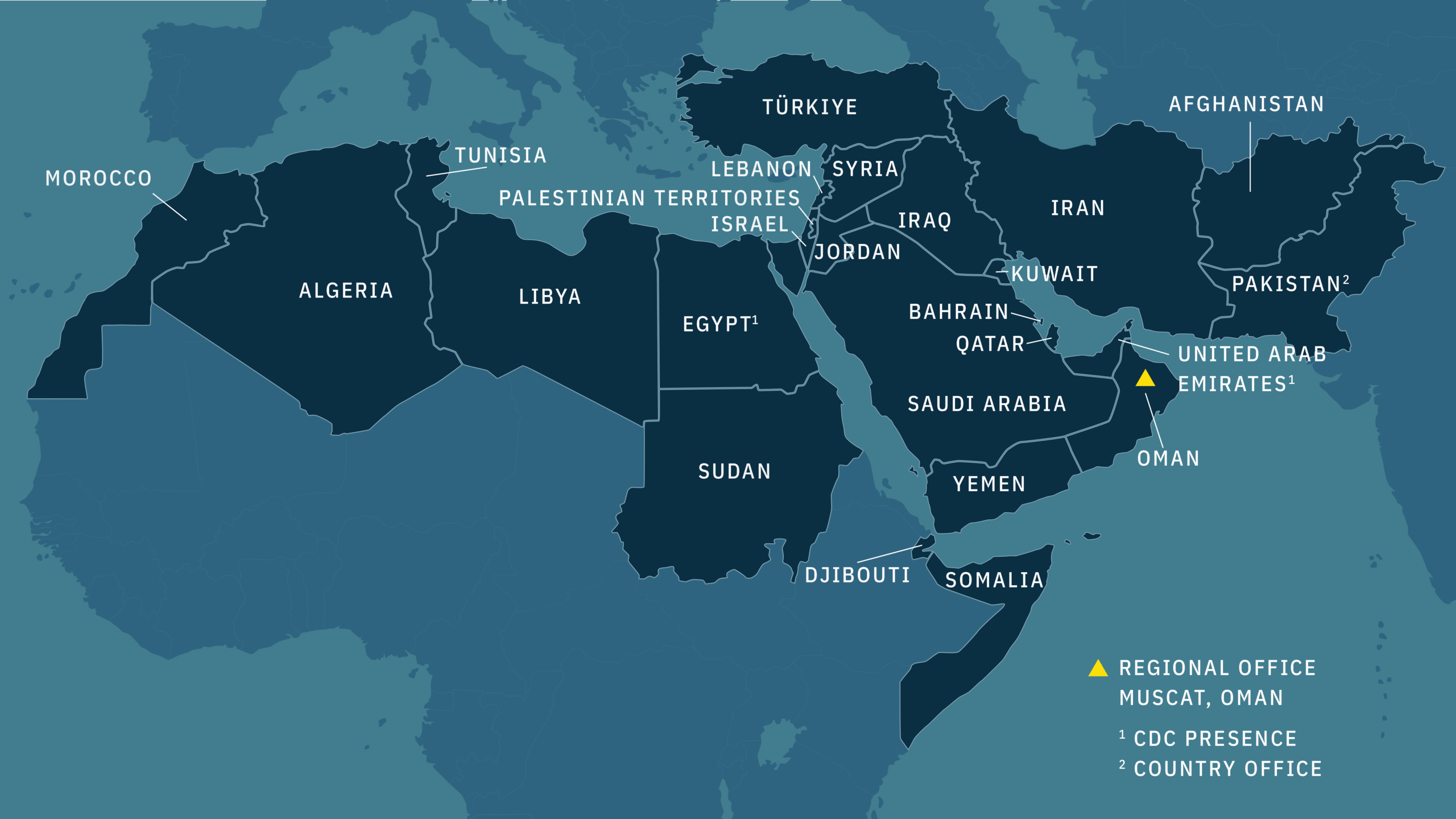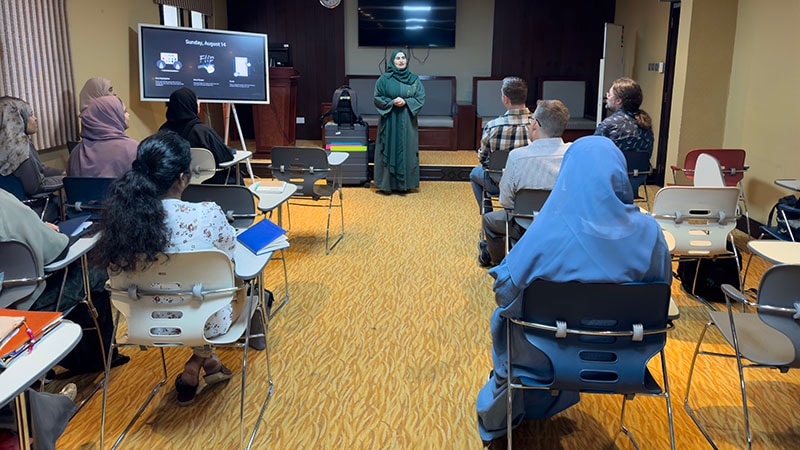At a glance
Established in 2020, U.S. CDC's Middle East/North Africa (MENA) Regional Office, located in Muscat, Oman, strengthens and expands CDC's historically limited footprint in the region. Strategic global partnerships strengthen health systems in the region, reducing strain on U.S. resources and enhancing readiness against health threats. U.S. CDC advances regional health security to stop disease outbreaks at their source, making America safer.

Overview

The MENA region is home to more than 879 million people and spans across 25 countries/territories where over 22 languages are spoken. Historically, CDC had limited presence in the region, with activities focused on special populations or program specific activities.
Today, CDC's presence in the region includes the MENA Regional Office established in 2020 in Muscat, Oman, a country office in Pakistan, and technical experts based in the region.
In recent years, CDC has supported the establishment of several new National Public Health Institutes in the region and expansion of the Field Epidemiology Training Program to additional countries. CDC has also supported laboratory strengthening activities such as the Global Laboratory Leadership Program, and regional trainings to strengthen laboratory capacities, workforce development, and preparedness and response.
The MENA region is diverse socially, politically, and economically. Public health capacities in the region also differ from country to country. The establishment of the MENA Regional Office has strengthened health diplomacy efforts in the region and better positions CDC to work collaboratively with host countries and partners in the region to prepare for and respond to broad public health priorities and public health threats in the region.
In addition to personnel in the region, subject matter experts at CDC headquarters in Atlanta, GA, provide technical support to these offices, as well as to partners across the region.
Key areas of focus
Reflecting U.S. CDC's Global Health Strategy, CDC MENA is focused on responding to health threats in the region by building core public health capacities in:
- Workforce development
- Emergency preparedness and response
- Public health surveillance and data systems
- Migration health
- Laboratory systems
- One Health, including antimicrobial resistance
- Immunization systems, vaccine planning, and priority vaccine-preventable disease elimination
- Emerging and re-emerging disease threats
Regional goals
U.S. CDC and partners are collaborating to:
- Strengthen partnerships with defined roles and expectations for engagement.
- Increase opportunities for public health collaboration.
- Develop a capable, flexible, and responsive regional public health workforce.
- Strengthen laboratory capacity and support.
- Enhance capacity of governments to effectively manage and respond to public health emergencies.
- Strengthen regional capacity to address priority public health concerns.
- Support responsive and reliable surveillance systems.
- Develop evidence-based public health policies, guidance, and recommendations.
- Decrease prevalence of vaccine preventable diseases.
- Eliminate diseases of public health importance.
- Leverage health diplomacy initiative to promote peace in the region.
Success story spotlight
Local-to-global: Innovative "Lab Twinning" Approach Benefits U.S. and Oman

When CDC opened its Middle East/North Africa Regional Office in Oman in 2020, one of the top priorities identified by the Ministry of Health was strengthening laboratory capacity. Recently, a first-of-its-kind "lab twinning" program matched the Oman Central Public Health Laboratory (CPHL) with laboratories in Wyoming and Oregon, delivering benefits for everyone.
With the help of the Association of Public Health Laboratories, the program sent two groups of Omani laboratory experts to U.S. State Health Laboratories in Wyoming and Oregon. While there, they received hands-on training in advanced molecular detection, whole genome sequencing, and bioinformatic data analysis. Next, the U.S. laboratorians made three visits to Oman to help enhance analysis at CPHL using in-house generated data.
Dr. Hanan Al Kindi, Director of the Oman CPHL, says the twinning program has had transformative impact for scaling up CPHL's next generation sequencing capabilities. In an outbreak, labs use next generation sequencing to rapidly understand the cause, track the spread, and formulate the right response. Since CPHL serves as a WHO regional reference laboratory, enhancing these capabilities helps make the whole region safer.
But, according to Dr. Josef Reed, Director of the Wyoming State Laboratory, the benefits go both ways. "The twinning program has significantly broadened Wyoming scientists' expertise," he says. "This partnership has been instrumental in advancing public health capabilities across both regions."
